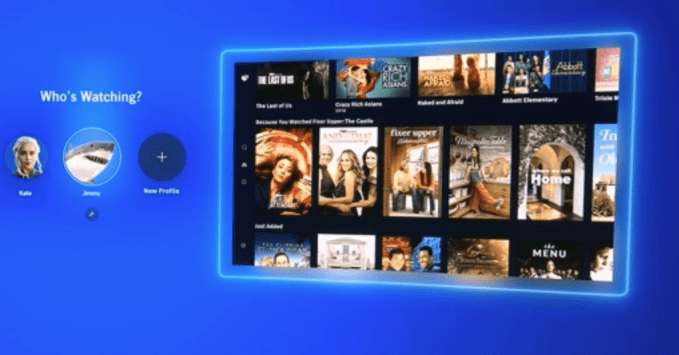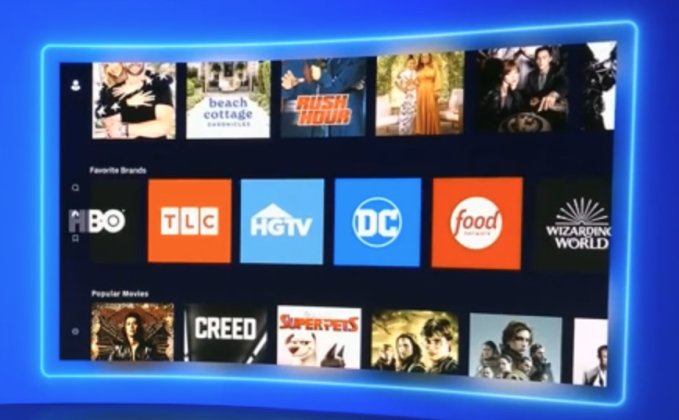A few weeks before Warner Bros. Discovery launches its new HBO Max/Discovery+ streaming service, Max, TechCrunch spoke with WBD chief technology officer Avi Saxena and chief product officer Tyler Whitworth about building the new platform from the ground up, rolling out new features, improving functionality, adding new tech and all around designing the product.
They also outlined the technical steps the company took to ensure Max subscribers have a smooth viewing experience.
As you would expect, merging two streaming services together isn’t exactly a walk in the park. Overall, the company underwent 12 months of planning to build a cohesive platform that serves all types of customers.
Saxena explained to us that in order to fast-track the process, engineer teams from both sides pitched in.
“Bringing the teams together was really a MasterClass in engineering, organization, design and architecture,” Saxena said. “We brought on all the teams that worked on front-end technology, the team that worked on payments technology, the teams that worked on user authentication, every aspect of the product.”
“The team’s had a very rigorous debate on what do we really want in our product going forward to serve the customer the best,” Saxena added.
It’s safe to say WBD has a lot to prove with Max, given its not-so-great reputation with HBO Max’s app, including multiple outages and complaints of playback issues, problems with audio and bugs.
Even WBD’s CEO and president of global streaming and games, JB Perrette said HBO Max and Discovery+ had their respective “shortcomings” he admitted during the WBD press event in April. The company also said in its announcement that Max would provide a new video playback experience that provides a smooth and cinematic experience for users.
“Performance is one of the most important parts of the platform,” Saxena told us. “So to improve performance, number one from the onset, we set a goal that every app needs to be at least 20% faster than the existing app.”
To achieve this goal of faster performance and more stability, Saxena told us that Max uses multiple CDNs (content delivery networks) to give the app improved resiliency. CDNs are a group of servers that caches and streams content to nearby end-users while also keeping the content secure. Essentially, the networks help speed up content delivery.
“So when something goes down, the product still continues to work,” he explained in layman’s terms.
Max uses four CDNs— Amazon CloudFront, Google’s Cloud CDN, Akamai and Fastly. It also uses AWS as a primary cloud provider, which millions of companies rely on for storage, databases and cloud-compute.
“In any given month, we deliver more than an exabyte worth of content, which is 1,000 petabytes a month, which is a big amount. And you cannot rely on just one CDN to do that,” Saxena added.
(For reference, an exabyte is a large unit of digital storage.)
“As we started to build Max, obviously we had the benefit of learning a lot from HBO Max and even from Discovery+, and we really focused on three things that we had learned,” Whitworth said. “One, doing the basics better. You know, the things that really matter to customers, how the product works… Second, we knew that we really wanted to make it easy for customers to find and watch the content that they love. Third was how do we make it easier to use.”
In addition to performance, the major improvements that WBD focused on were:
- Personalization features
- Streamlined navigation menu
- Better kids experience
- Easier sign-in and payment process
For starters, Max will have individual user profiles that are designed to offer more personalized recommendations based on their viewing habits. Users will also get a personalized homepage. Max will have recommendations across every platform–a first for the company. In contrast, HBO Max only has things like “More Like This” recommendations, which appear on the screen when users finish watching a TV show or movie.
The recommendations are driven by both human curation and machine learning.
“While we want to provide personalized choices to our customers, we also want to retain the option to promote some of the content that we feel very proud of,” Saxena said. “So we picked the hybrid approach, where most of the page is generated using machine learning. And then our editors have the option to override.”
When HBO Max initially launched in 2020, only parts of HBO Max were dedicated to human-curated recommendations.
“We’re excited about taking that human and algorithm combination throughout the whole product, whereas previously we were a little more selective and limited where that was done,” Whitworth added.
Another priority was making the content easier to find. Max will have a new content navigation menu at the top of the screen, genre hubs and dedicated content pages for the top WBD-owned brands–HBO, Discovery Channel, Food Network, HGTV and more. Plus, there is a new shortcut for users to add a title to their favorites list.
Max is also giving parents the option to set new profile options for their child, such as little kids, big kids, big kids plus, pre-teens or teens.
“We created these categories that make it a little more intuitive. Because not everybody knows what TV-PG means… [We] want to make it easier for people to make quickly understand it and see how it works,” Whitworth explained. “I happen to have three kids myself, and you know, sometimes using these kids’ features in streaming products isn’t isn’t as easy as it could be.”
Netflix is one streamer that allows users to set different maturity settings– Kids, TV-PG and PG.
Another rival streaming service, Disney+, caters its kids experiences to younger kids. So, Max will likely target slightly older children who want to watch titles like “The LEGO Batman Movie,” “Gremlins: Secrets of the Mogwai,” “Scooby-Doo” and more.
Max users are also getting new alerts that notify them about failed payments. Plus, Paypal is now a payment option.
The streaming service will give users a new sign-in process, so they’ll no longer need to type in their credentials with their TV remote.
A notable – yet pricey — addition to the updated platform is the new tier, “Max Ultimate Ad-Free” ($19.99/month), which gives users access to more 4K UHD content, 100 offline downloads, Dolby Atmos sound quality and the ability to stream on four devices at one time.
Whitworth said that launching the ultimate plan gives the company an opportunity to provide better video quality and more downloads to customers. “We thought giving customers more choices was generally a better direction to go. And we’re excited to see how customers use it going forward,” Whitworth said.
It’s important to note that HBO Max subscribers previously had access to 4K content yet were only paying $15.99 per month. Now they’ll have to cough up more cash if they want to watch high-quality streams of their favorite titles like “The Last of Us,” “Lord of the Rings,” “Game of Thrones” and “The Dark Knight” trilogy, among others.
Notably, Whitworth also noted that the engineering team built a “really great” live platform that can “deliver any kind of live content,” he claimed.
In the past, HBO Max has livestreamed UEFA Champions League matches in Brazil and Mexico. In January of this year, the streamer began broadcasting domestic live sporting events, giving subscribers access to live U.S. national soccer games.
The company has yet to announce which live sporting events are launching on Max.
“I think we’re excited about what live could become in Max. We’re still working through kind of what that’s going to look like, when that can happen, what will be included or not,” Whitworth added.
Regarding the overall design, Whitworth said the company intentionally didn’t want Max to look drastically different from its predecessor HBO Max.
“We wanted to make the transition pretty smooth for our HBO Max customers. So we really viewed the product as more of an evolution of HBO Max than a revolution of it,” Whitworth said. “You’ll see that it has a lot of the look and feel and some similarities to HBO Max, so it wouldn’t be a huge transition for those that use HBO Max all the time.”
When asked about future plans for futures, Whitworth declined to go into detail. However, he noted that the company is exploring “better opportunities to find content when you’re actually in the video player itself.”
“There’s a long list that we’re really excited about, and ultimately it’ll be based on what customers like and how they use our product and we will evolve in a way that works best for our customers,” he said.
While Max will essentially look like a revamped HBO Max – aside from the new blue color and slightly different name — it will also contain a majority of content from Discovery+.
The company is also set to launch new content on the service, including a “Harry Potter” TV series and “Game of Thrones” spinoff.
The streamer is set to launch in the U.S. on May 23.
Warner Bros. Discovery CTO and CPO explain how they made Max less buggy by Lauren Forristal originally published on TechCrunch

















 English (US) ·
English (US) ·